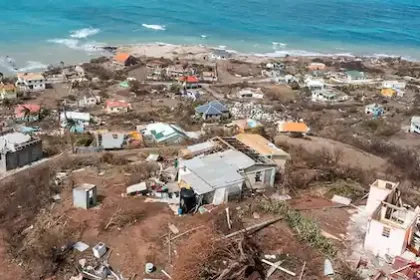World Bank released the World Development Report 2024, focusing on middle-income countries and their growth rate. The report also presented strategies for the Caribbean and other developing nations to escape the middle-income trap. The study by the World Bank officials was discussed in Jamaica on 17 October.
At the official gathering, a point was made about the effort of middle-income countries to raise their income levels over time. It was stated that out of 108 countries, only 34 countries had been able to achieve the aim of high-income status in 2023 since the 1990s.
Five nations, including Guyana, Barbados, Trinidad and Tobago, Antigua and Barbuda, and St Kitts and Nevis, achieved that goal in the Caribbean region. Just a few time ago, the World Bank also disclosed its study on how the region’s economic growth is trapped, and the new report provides a roadmap to deal with that situation.
The World Development Report 2024 is made after observing the trends and growth of the nations in the last fifty years. The focus on the middle-income trap by the experts of the World Bank, considered the usually low noted as the countries grow wealthier.
The officials highlighted that as the developing nations hit the mark of around ten percent of annual US GDP per person, they get stuck in a trap and face difficulty in recording better growth rates. Today, this percentage is valued at around eight thousand dollars, which also lies in the class of middle-income countries as per the World Bank.
it is said that after 2023, the nations classified as middle-income arre facing bigger challenges as compared to their predecessors in escaping the middle-income trap. Some major issues faced in the way is rising protectionism in advanced economies, need to speed up the energy transition, and rapidly aging populations.
The Senior Vice President for Development Economics and the Chief Economist of the World Bank Group, Indermit Gill, shared his words on the outcomes of the World Development Report 2024. he said, “The battle for global economic prosperity will largely be won or lost in these middle-income countries. But many of these countries rely on outmoded strategies to become advanced economies.”
Indermit Gill added, “They depend only on investment for too long, or they prematurely switch to innovation. A fresh approach is needed. First, focus on investment, then add an emphasis on the infusion of new technologies, and finally, adopt a strategy that balances investment, infusion, and innovation. With growing demographic, geopolitical, and ecological pressures, there is no room for error.”
Over pointing out the issues, the World Development Report 2024 also provides the way of solition in the form of a 3i strategy. it is said that this strategy will help the middle-income nations to reach high-income status. This mathod can be adapted with progressively and sequenced mix of policies, depending on the current situation of the country.
Under 3i strategy, the phases are distributed in 1i, 2i, and 3i stages. The 1i phase is structure for the low-income nations, which focuses on policies to increase investment. The 2i phase is for the nations with lower-middle-income status, that need the implementation of technologies across the economy.
The efforts of these countries must be diverted on investment and infusion as per the strategy under World Development Report 2024. The nations at the upper-middle-income level need to follow the 3i phase, under which the focus will also be on innovation along with investment and infusion.
Lilia Burunciuc, the World Bank Director for the Caribbean, said, “The low and middle-income nations of the Caribbean can and should make progress. Restructuring and reforms will be needed but, we can learn from those who have transitioned successfully, including within this region.”







